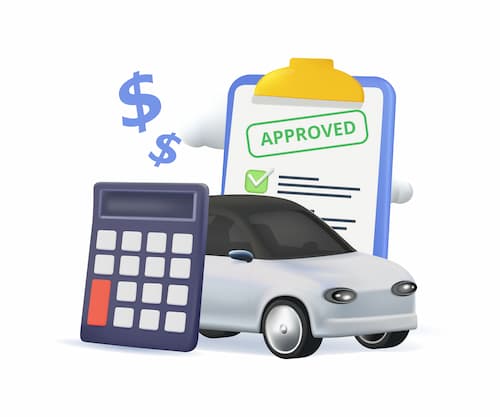- What is the best car insurance company for teen drivers?
- What company has the cheapest car insurance for teens?
- What is the cheapest way to get car insurance for a teenager?
- Best car insurance for teens: What real customers say
- How much is car insurance for teens? Rates at 16, 17, 18 and 19 years old
- How much does it cost to add a teenager to a car insurance policy?
- How to save on car insurance for teenagers
- Are there discounts for teen drivers?
- Car insurance for college students
- Do you need insurance when you have a learner's permit?
- Can you exclude a teen driver from your insurance?
- Teenage car insurance: The bottom line
- Methodology
- FAQ: Car insurance for teens and young drivers
What is the best car insurance company for teen drivers?
Travelers is the best car insurance company for teens and young drivers, followed by GEICO and State Farm. That's based on our analysis of rates, customer complaints with the National Association of Insurance Commissioners (NAIC), financial stability ratings from AM Best and each company's score on our annual Best Insurance Companies survey.
The table below highlights how top insurance companies stack up as an option for teen drivers.
| Company | NAIC Complaint Ratio | AM Best | Survey score | Annual premium | Overall rating |
|---|---|---|---|---|---|
| Travelers | 0.52 | A++ | 4.41 | $4,834 | 4.73 |
| GEICO | 0.69 | A++ | 4.43 | $5,049 | 4.67 |
| State Farm | 0.79 | A++ | 4.52 | $5,368 | 4.62 |
| Nationwide | 0.63 | A | 4.52 | $5,285 | 4.49 |
| Amica | 0.75 | A+ | 4.68 | $6,697 | 4.3 |
| Progressive | 0.71 | A+ | 4.4 | $7,174 | 4.09 |
| Allstate | 1.1 | A+ | 4.36 | $7,437 | 3.96 |
| Farmers | 0.86 | A | 4.41 | $8,348 | 3.72 |
*Super-regional carrier
Travelers: Best overall for teens and young drivers
Travelers' low average rates for teen drivers propelled it to the top spot on our list, but it also has the best AM Best rating available, A++. and a low complaint ratio with the NAIC. At 0.52, its complaint ratio is the lowest among our ranked companies; the NAIC sets a ratio of 1.00 as the expected average based on market share.
Nearly 71% of respondents in our survey reported satisfaction with Travelers for teen car insurance.
GEICO: Best for direct service
GEICO has the second-lowest rates among ranked companies for teen drivers, a low NAIC complaint ratio, and scored 4.43 out of 5 stars on our annual ranking of the best car insurance companies for 2025.
GEICO has long been known for low rates and offers a direct buy option that doesn't require an agent. Although you can't get home insurance with GEICO, you can still earn an auto-home discount when you purchase home insurance through the GEICO Insurance Agency, which works with names like Travelers and Liberty Mutual.
State Farm: Best for agent advice
State Farm runs on a captive agent system, which means their agents only sell State Farm policies and they know those policies well. For the parent of a teen trying to get car insurance, agent advice can be very helpful. State Farm rated very highly for customer satisfaction in our annual survey of car insurance customers.
Teen car insurance rates with State Farm are below average and the company has AM Best's top rating of A++.
People ask
Can a teenager get their own car insurance policy?
Minors can't sign a legal contract, and an insurance policy is a legal contract; therefore, drivers under 18 can't get their own insurance policy. However, they may be able to get a policy if a parent or guardian co-signs.
What company has the cheapest car insurance for teens?
The cheapest car insurance for teens is available through Travelers and GEICO. USAA offers the most affordable rates to those who are eligible.
Travelers' average annual car insurance rates:
- Female teen: $4,516
- Male teen: $5,155
GEICO average teen car insurance rates:
- Female teen: $4,783
- Male teens: $5,315.
These average costs provide an estimate of what you can expect to pay for teen car insurance. In addition to shopping around, seeking out discounts for good students and driver education courses can help you lock in affordable rates.
| Company | Female | Male | Average |
|---|---|---|---|
| Travelers | $4,516 | $5,155 | $4,834 |
| GEICO | $4,783 | $5,315 | $5,049 |
| Nationwide | $4,885 | $5,685 | $5,285 |
| State Farm | $4,886 | $5,851 | $5,368 |
| Progressive | $6,870 | $7,480 | $7,174 |
| Allstate | $7,105 | $7,766 | $7,437 |
| Farmers | $8,024 | $8,668 | $8,348 |
| USAA* | $4,296 | $4,473 | $4,385 |
*USAA is only available to military members, veterans and their families.
What is the cheapest way to get car insurance for a teenager?
The cheapest way to get car insurance for a teenager is to add them to a parent’s insurance policy. It is usually not a good idea for a teen to buy their own insurance because it can be very expensive, and, in many cases not even possible since minors can’t legally sign an insurance contract.
In addition to adding the teen driver to your policy, some other strategies for finding the cheapest rates include:
- Shop around: Every insurance company has slightly different rates. Getting quotes from multiple insurance companies will help you find the lowest rates for a teen driver. Don't forget to check smaller insurers.
- Seek out discounts: Many insurers offer discounts for good grades, taking a driver education course, and proving safe driving habits through a telematics app.
- Buy a cheaper car. Insurance rates are higher for newer, more valuable cars. Find a car with good safety features but without a high price tag to get lower rates.
- Raise deductibles. If you have to carry full coverage insurance, carrying higher deductibles will mean lower rates; just make sure you can afford to pay it if there's a claim.
Best car insurance for teens: What real customers say
Our annual survey of insurance customers found that drivers are most satisfied with Allstate for teens and young drivers, followed by USAA and American Family.
Auto-Owners and Mercury landed at the bottom of the list. Here are all of the companies in the survey and how real customers felt about each for teens and young drivers.
| Company | Percent of customers who were satisfied |
|---|---|
| Allstate | 71% |
| USAA | 68% |
| American Family | 68% |
| Liberty Mutual | 67% |
| CSAA Insurance Group (AAA NorCal/NV/UT) | 67% |
| Nationwide | 63% |
| Auto Club Enterprises (AAA SoCal) | 59% |
| Auto Club Group (AAA Midwest/South) | 57% |
| GEICO | 55% |
| State Farm | 53% |
| Amica | 53% |
| Safeco | 47% |
| Hartford | 42% |
| Farmers | 42% |
| Erie | 41% |
| Travelers | 39% |
| Progressive | 39% |
| Auto-Owners | 29% |
| Mercury | 20% |
*USAA only offers insurance to military members, veterans and their families.
How much is car insurance for teens? Rates at 16, 17, 18 and 19 years old
Even one year can make a big difference in car insurance costs. The risk is highest with 16-year-olds, who have a crash rate two times higher than 18- and 19-year-olds. The average car insurance rates for teenagers shown below reflect that risk:
- 16-year-old - $7,149
- 17-year-old - $5,954
- 18-year-old - $5,249
- 19-year-old - $4,126
- 20-year-old - $3,739
Car insurance rates drop significantly by age 20. Rates continue to decrease with age until about age 65.
People ask
How much is insurance for a 17-year-old monthly?
The average cost of a full coverage policy for a 17-year-old is $496 a month, but that may be much lower if you choose liability-only insurance or purchase a cheaper car.
How much does it cost to add a teenager to a car insurance policy?
The cost of adding a teen to your insurance policy will vary based on your unique situation and their age. In general, adding a male teen driver to your insurance policy costs more than adding a female teen driver.
The table shows the average cost of car insurance from top insurance companies when adding a teenager to an existing car insurance policy.
| Company | Parents' average premium | Cost when adding a teen female | Cost when adding a teen male |
|---|---|---|---|
| State Farm | $1,671 | $2,893 | $3,200 |
| GEICO | $1,264 | $2,473 | $2,622 |
| Allstate | $2,310 | $3,878 | $4,195 |
| USAA | $1,101 | $2,346 | $2,491 |
| Progressive | $1,913 | $3,722 | $3,992 |
| Nationwide | $1,538 | $2,372 | $2,510 |
| Travelers | $1,806 | $3,427 | $3,810 |
| Farmers | $2,939 | $4,822 | $4,921 |
How to save on car insurance for teenagers
Teen auto insurance rates aren't set in stone. Here are a few easy ways to bring them down.
- Raise your deductible. An easy way to lower car insurance premiums is to raise your deductible. However, weigh this against young drivers being more likely to get into accidents. You have to pay the deductible amount when you get into an at-fault accident. Increasing your deductible from $500 to $1,000 will reduce your annual premium by approximately $400. You can also drop comprehensive and collision coverage if the car isn't financed or worth much. Use our auto insurance coverage calculator to figure out how much coverage you need.
- Choose the right car. A car with a high safety rating will be cheaper to insure. Use our list of car models to find the cheapest cars to insure.
- Delay getting a license. This isn't a popular option for an eager teen driver, but it's worth considering. If you compare the average rates for a 16-year-old and a 19-year-old, an older teen driver is significantly cheaper to insure. However, the insurer still charges higher rates for the first few years a driver is licensed.
Another way to minimize your insurance premiumThe payment required for an insurance policy to remain in force. Auto insurance premiums are quoted for either 6-month or annual policy periods. is to ask your insurer about discounts available.
Are there discounts for teen drivers?
Below, we've listed the best discounts for teen drivers to get affordable car insurance.
- Good student discount. Good grades tell insurance companies you have a responsible kid. The required grade is usually a "B" average (3.0 grade point average) or higher. Typically, the student must be under the age of 25. This discount averages 16%.
- Defensive driving discount. You can take extra driver education or a defensive driving course. This means exceeding the minimum state-mandated driver's education and training. In most states, teen drivers can save around 5% on their premiums by taking a state-approved driver improvement class. Online classes are a convenient option but check with your carrier first to make sure it will lead to a discount.
- Student away from home discount. Most car insurance companies offer a student away-from-home discount for students who are away at college. This discount averages 18%.
- Good driver discount. Keep a clean record to get lower rates. This may not be available to newly licensed teens.
- Low-mileage discounts. Pay-as-you-drive or pay-per-mile insurance can also reduce rates. Most car insurance companies offer discounts if you allow a telematics device to be placed in your vehicle so they can monitor your driving habits. This is considered "pay-as-you-drive." This can provide a discount of around 6%. With pay-per-mile, you'll pay for the distance you drive, rather than an average. Both discounts are great for teens or families that don't drive very often.
- Look for unrelated discounts. Review discounts unrelated to teens, like a multiple vehicle discount and a home and auto bundle discount for additional savings.
Car insurance for college students
College students can also find ways to reduce rates. If the student plans to leave a car at home and the college is more than 100 miles away, they could qualify for a "resident student" discount or a student "away" discount, as mentioned above.
College students will also qualify for the above-mentioned good student discount, with the same grade requirements.
Do you need insurance when you have a learner's permit?
You should notify your insurance company as soon as a driver in your household gets a permit.
You won't see a rate increase for a driver with a permit; that happens when the driver is fully licensed. Be prepared for that time with the guidance on options and discounts found here. Also, it may be wise to contact your insurance provider for all options.
Can you exclude a teen driver from your insurance?
It's possible to ask your insurance company not to cover your teen driver, but not all companies will do it, and it's risky. It's called a named exclusion, and it means your teen can't drive your car at all.
By endorsing your policy, you and your insurance company mutually agree that the driver isn't covered, which means neither is any accident the driver causes. Not all companies allow this, and not all states do either.
Teenage car insurance: The bottom line
Rates aren't everything, although, with a teen driver, they are a big part of the decision. However, you don't want to choose a policy with a sketchy insurance company, especially if the rates seem too good to be true. Make sure you research any insurance company you're considering signing up with. Read reviews and check AM Best financial ratings. Having a company that will be there when you need to file a claimAn insurance claim is a request you make to your insurance company for coverage after your car is damaged or you have an accident. You can file a claim online, by phone, or in writing. is just as important as saving money (maybe more important).
In nearly every case, you are better off adding your teen to your insurance policy, but that doesn't mean you shouldn't shop around. Now is the time to compare rates for all of your family's insurance needs.
Methodology
Unless otherwise indicated, averages are based on our full coverage data set. This data set is based on:
- Bodily injury liability of $100,000 per person and $300,000 per incident
- Property damage liability of $100,000 per incident
- Comprehensive and collision deductibles of $500
- 40-year-old driver
- Honda Accord LX
- Good credit
- A clean driving record
- 12-mile commute, 10,000 annual mileage
Additional rate data is drawn based on:
- Teen drivers aged 16-19
- A teen driver on a parent's policy
Survey respondents were asked to name their auto insurer and then grade it in several categories, including insurance for teenage drivers. The overall survey score is represented in the rankings, and we have also presented the survey score for teen drivers separately.
Learn more about our data and methodology.
FAQ: Car insurance for teens and young drivers
How much is GEICO car insurance for a 17-year-old?
Female teen drivers pay an average of $4,783 per year. Their male counterparts pay an average of $5,315 per year.
How much is teenage car insurance per month?
The monthly cost of car insurance for a teen depends on a lot of factors, but on average, it's $596 a month at 16 years old, ranging up to $344 a month for a 19-year-old, based on a full coverage policy.



